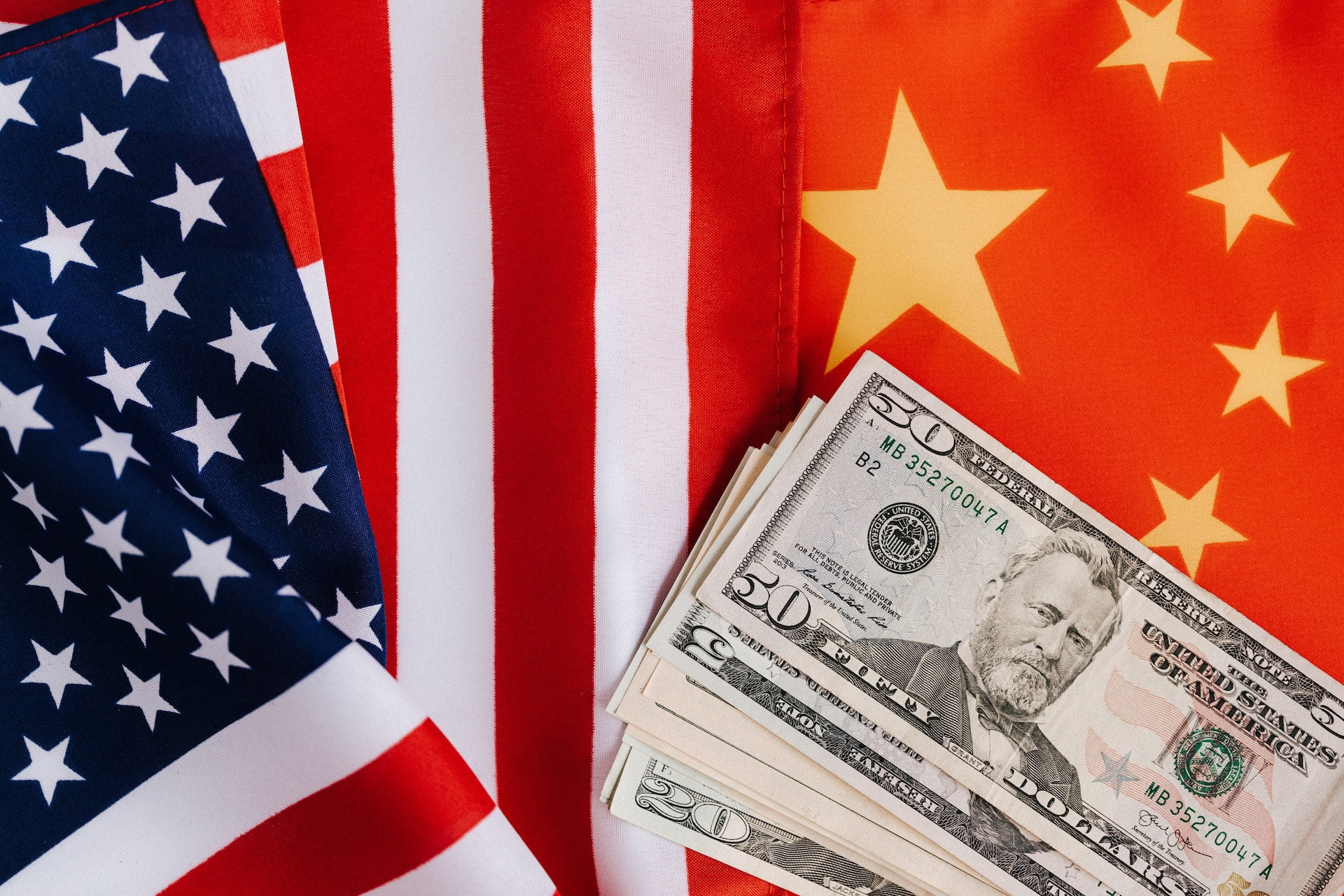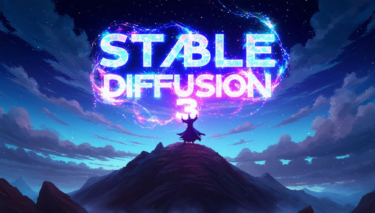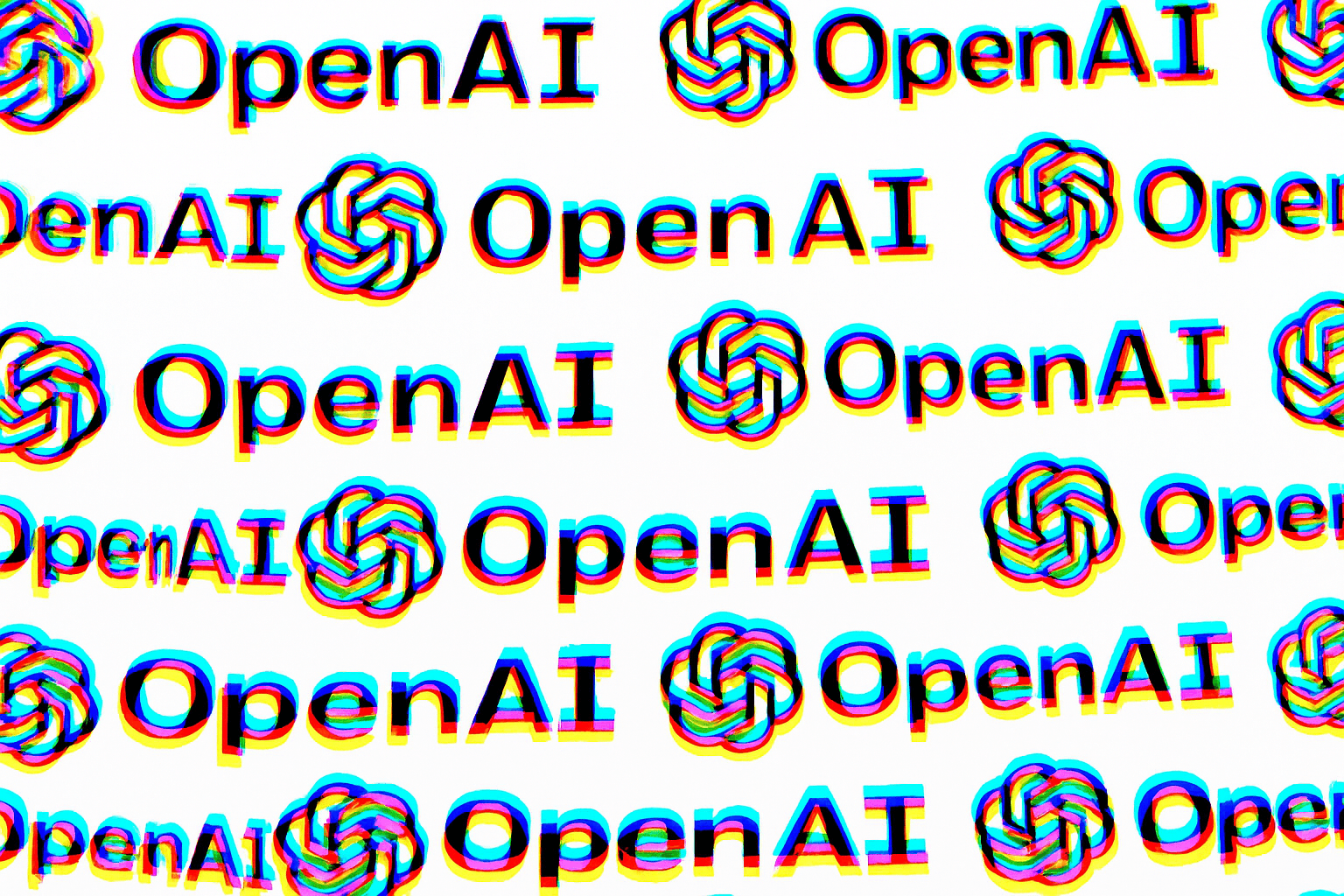In the race for AI supremacy, there are two possible winners and the EU. An overview and assessment of the status quo.
The global race to develop the best AI systems is in full swing. For years, the People's Republic of China and the United States of America have been engaged in a technological race comparable to the arms and space races of the Cold War.
But what is this AI race all about? Why are world powers so interested in this technology and what are they doing to stay ahead? Where is the EU in this race?
Artificial intelligence: an all-rounder
The two countries' interest in AI is largely due to the technology's versatility - it is a key technology that can be used in almost any field.
In particular, AI's ability to increase overall economic competitiveness and productivity, as well as military upgrades to weapons systems, has sparked interest in Washington and Beijing. While AI is a tool that makes everyday life easier for individual users, the technology is increasingly becoming a strategic asset for states.
With experts predicting that we are at the dawn of a new AI-driven industrial revolution, it is not surprising that rival nations are also investing heavily in this area in order to gain a leading position in tomorrow's global economy - "The Winner Takes It All".
But what exactly are the two rivals doing to win this race?
China: Vision and strategy
The starting gun for the "AI race" was fired back in 2017. In July of that year, the government of the People's Republic of China published the "Next Generation AI Development Plan". In it, China declared the development, research, and implementation of artificial intelligence to be a national priority, while aiming to become a global leader in these fields by 2030.
As part of its initiative, China has begun to invest billions of dollars in IT and AI companies and to promote research. With success: At the practical level, the People's Republic trains around 1.4 million engineers every year, a full third of them in the field of AI. China also excels in the theoretical-scientific field. Nine of the ten most prestigious AI research institutions are located in China alone, which is already supplying the scientific community with publications in terms of both quantity and quality.
The international reputation of these institutions is mainly due to the fact that the results they publish are currently among the most cited publications in the entire field of AI. In fact, Chinese research reports are cited more often in scientific publications outside China than inside China. This shows that Chinese AI research is internationally recognized and used as a basis for further developments in the field worldwide.
China has a data advantage
In addition to research and skilled labor, the country also has a huge data advantage. Artificial intelligence and its applications need to be fed and trained with large amounts of data to be powerful. Access to this data is particularly easy for research and development in China, both because privacy regulations are rapidly being lifted in the national interest, and because the country has already equipped many industries, such as services and construction, with data-generating virtual assistants, robots, and surveillance systems that collect data from some 1.4 billion Chinese citizens.
So, in addition to financial investment, skilled labor, and scientific institutions, China also has an extremely helpful database to realize its vision of becoming a world leader in AI.
To build confidence in the technology at home and abroad, the government is almost regularly passing laws to regulate AI and is increasingly integrating the technology itself into people's everyday lives. China also hopes to export its regulatory standards and AI applications internationally.
One result of China's AI development program, for example, is Alibaba's AI-powered "City Brain Software". Based on traffic data from the city of Hangzhou, traffic in one of the world's busiest cities could be significantly optimized through intelligent traffic light switching. Hangzhou was ranked fifth on the list of the world's busiest cities, but after using the City Brain software it moved up to 57th place.
China is thus vigorously pursuing its own vision of becoming a leader in the development, regulation, and implementation of artificial intelligence. But how is China's biggest and most systematic competitor, the US, responding to this ambitious leadership claim that is now bearing fruit?
US: from defensive to offensive
When the ambitious leadership claims were announced in Beijing in 2017, the US initially saw no reason to act. Although influential figures in the tech industry, including former Google CEO Eric Schmidt, warned at a security conference shortly after the Chinese initiative was announced that China could well follow through with its plans, the US relied on its previous dominance in the tech industry, according to US defense expert Paul Scharre.
It was not until May 2021, when Eric Schmidt, in a final report of the National Security Commission on Artificial Intelligence, spoke of an acute threat to US citizens from China's advances in AI, that the US under Joe Biden began to take action in the race to catch up.
In addition to catching up in terms of investment in the AI economy and research, which is currently six times greater than Chinese investment, the US began to counter China's growing influence in the summer of that year. In addition to promoting and favoring its own industry, and later banning Chinese security cameras and networking equipment for fear of Chinese data collection, the US is playing two main advantages against China.
US relies on chip embargoes
First advantage: While China has an amazing research network and extensive application systems, it sources the chips it needs for research and development mainly from the United States. To slow China down, the US government passed an export ban on these chips in August 2022, the so-called "Chips and Science Act". This decision represents a serious setback for the People's Republic, as it will no longer be able to benefit from the technological advances of Western companies by simply buying them on the open market and using them for its own development.
A few months ago, the US processor and chip manufacturer Nvidia released the "H100" GPU for sale. Nvidia's GPUs are primarily relevant for training generative AI and large language models, or for processing their data. According to the manufacturer, the H100 is nine times faster than its predecessor, the A100, and thus represents an immense boost for the entire AI research and industry. The export ban on these chips (including the H100 GPU) denies China access to this key component, which could cause the country to fall behind in direct comparison with the West in the research and development of AI systems.
This threat is taken seriously in Beijing, and the first steps have already been taken. On the one hand, China is using various loopholes, which are increasingly being closed, to still obtain US chips and is hoarding them; on the other hand, investment in its own chip industry is increasing. The Communist Party's goal is to achieve technological self-sufficiency in order to reduce and eventually eliminate dependence on foreign chips.
Although China is several generations behind the US in chip development, some experts, including Stanley Chao, former vice president of US chip maker Kingston Technology, see the potential for rapid progress in Chinese chip technology and predict that the US could be caught up by China by 2025 if Chinese investment in its own industry continues to grow. The US chip embargo against China may soon lose its effect.
Another advantage that the US is exploiting is the fact that many talented people (including Chinese) prefer the US as a place to do research and as an employer because regulations are lax compared to China. So it makes sense for the US to systematically recruit this talent.
So despite past failures and more protectionist measures, the US is more than a respectable competitor to China and is currently the market leader.
After all, the US is home to numerous internationally active big data and technology companies, as well as most of the AI startups that have significantly shaped the last decades of AI history, including well-known examples such as Microsoft, Google, Intel or Nvidia, and AI startups like OpenAI and Anthropic.
Regulations can be a hindrance: ChatGPT vs. Ernie
Surprisingly, what also keeps the US ahead of the People's Republic is the lack of regulation itself. Although China recognized early on that regulation is an important factor in building social and economic trust in new AI technologies and systems, the Communist Party's strict requirements are at the same time a self-inflicted obstacle to the development and adaptation of AI.
To understand this phenomenon, a brief comparison between the emergence and spread of ChatGPT and its Chinese alternatives from Baidu, Alibaba, and the like will help.
In liberal democracy and an even more liberal economic system, OpenAI enjoys the privilege of shaping and regulating the development and distribution of its own products such as ChatGPT. This has allowed the start-up to make fundamental decisions such as general accessibility via the browser, or even the provision of APIs for further implementation of the technology in other application areas, without having to coordinate with external authorities. As a result, not only the number of users with an OpenAI account grew rapidly, but also the number of applications based on ChatGPT.
Due to the lack of government regulation, both the company and ChatGPT, and thus the technology, were initially able to develop unhindered in the market and in society.
The situation is different in the People's Republic of China. Here, software companies in particular are essentially under state control. While OpenAI can operate almost autonomously in the West, in China all aspects of development, from basic design to rollout to consumers, must be approved by the state.
This is particularly evident in ChatGPT's biggest Chinese competitor, Baidu's chatbot 'Ernie'. Due to China's strict censorship, the chatbot has to forgo functionality while representing state-imposed socialist values. Rather than increasing the number of users, as OpenAI's ChatGPT is doing in the West, Chinese users have to wait on long waiting lists or hope for access to limited trial versions, as the state first wants to ensure that the technology meets the government's vision and reaches its future users in a controlled way.
An example of this approach is a recent Chinese draft law that would require new software applications to be reviewed by official bodies for their conformity with the state before they are released.
Chat-GPT has been able to spread and establish itself in the West unchecked; Ernie is currently a chatbot on a short leash.
The US attracts skilled workers
This situation, brought about by strict and autocratic regulation, leads to restrictive inertia in the development and application of AI, which can prove detrimental in a literal "AI race" to take the lead in the AI sector. In the West, anyone can distribute and develop their AI and software products almost unhindered, but in China, regulation is an obstacle that slows down the pace of development and adaptation in favor of the authoritarian regime. This severe over-regulation makes China unattractive as an AI location for Chinese specialists, who are increasingly choosing to research and work in the US.
Although the above comparison gives the impression that the US and the West offer a perfect, frictionless regulatory environment for AI, this is by no means the case in one area in particular: data regulation.
While the People's Republic of China has extensive data collection for training AI models, since 2014 there have been recurring considerations in the U.S. to break up big data groups due to U.S. antitrust and competition law concerns about potential monopolization, and to tighten privacy policies, which would counteract the very large data accumulation necessary for competitive AI development and play into China's hands in the race for dominance.
In conclusion, the US has largely made up for its recent failures and has the potential and political will to win the race. But what about the European Union? What plans does it have to enter the race?
The European Union: United in disunity
The European Union has several problems. The most important is that while China and the US, have clear objectives behind the promotion of the AI industry, the EU lacks a strategic focus. While the EU recognizes the opportunities and risks of the technology, there is no common European strategy and initiative.
At the level of AI regulation, the EU is ahead of the US and far behind China with the AI Act, but the European continent lacks practical experience with digital entrepreneurship and digital consumer products. The big players like Meta's social networks, software suites like Office, and hardware like TSMC and Nvidia are mostly export products from outside the EU.
As a result, the continent lacks the experience, infrastructure, and hardware that helped China and the US enter the AI era. Strict data protection guidelines are also becoming a problem, and not just for the US: for example, German data protection authorities have initiated proceedings against OpenAI and ChatGPT for the use of data in training and general use, creating uncertainty in Europe's fledgling AI economy due to the lack of a legal basis.
This does not mean, however, that such legal conflicts must always lead to uncertainty. The legal battle between the Italian data protection authority and OpenAI in April this year showed that tackling regulatory issues head-on can lead to new certainty. Italy had blocked ChatGPT due to a lack of data transparency and privacy concerns; the operator responded to the DPA's requests as quickly as possible and in the same month, and the chatbot has since been available in Italy with adjusted terms of service and more transparent data processing. For other similar companies, this process provides guidance on how to deal with generative AI and data protection in Italy in order to operate in a legally compliant manner.
The example shows that regulation, especially in the area of comparatively strict data protection in the context of artificial intelligence, is certainly possible and feasible, but as the Italian DPA has shown, it requires clear and realistic specifications and ideas about what this regulation should look like in order to send reassuring signals to the European AI industry. Although Italy has led by example, such a pragmatic and effective approach has been lacking at EU level.
EU risks geopolitical influence
These shortcomings and the rather low level of support for AI startups are also reflected in the figures. Among the top 10 best-funded AI startups, not a single one is from the EU; only in the case of dropouts, whose number has been steadily increasing since 2021, is the EU in the lead.
This imbalance could become a serious problem. If the EU does not have AI products and services to keep up with China and the US, it risks a significant loss of geopolitical influence and increasing technological dependence on others.
Experts therefore urgently recommend that the EU create independent infrastructures and production facilities for the relevant hardware, as well as an expanded funding culture and legal basis, so that the EU does not lose out in the global competition.
USA, China or the EU: Who is ahead?
It is difficult to say who is currently leading the race. With the US rapidly catching up and clearly competing with China's claim to leadership, the two sides are currently somewhat balanced in terms of regulation, application, and research. What one lacks, the other has, and vice versa. The jury is still out.
What is almost certain, however, is that if the EU does not develop its own far-reaching strategies and positions on technology and the promotion of Europe as a location, it risks being left out of the race altogether, with significant disadvantages for the future of the European Union in the AI era.
As China and the US battle it out for the top spots, the EU must act to avoid being left behind at an early stage.
Sources:
- Berg, Matt. "‘Four Battlegrounds’ Shaping the U.S. and China’s AI Race." Politico, 28. Februar 2023.
- Castro, Daniel. "Who Is Winning the AI Race: China, the EU or the United States?" European AI Alliance. August 19, 2019.
- "US-China AI Race: AI Policy as Industrial Policy." 2023 Landscape US/China AI Race. AI Now Institute. April 11, 2023.
- AI Now Institute. "Tracking the US and China AI Arms Race." 2023 Landscape US/China AI Race. April 11, 2023.
- Ingram, David. "ChatGPT has thrown gasoline on fears of a U.S.-China arms race on AI." NBC News, März 5, 2023.
- Heath, Ryan. "China races ahead of U.S. on AI regulation." Axios, Mai 8, 2023.
- Chou, Gabrielle. "China’s race to become global AI superpower." Le Monde diplomatique, April 2023.
- Scharre, Paul. "America Can Win the AI Race: It Has the Resources—Now It Needs a Plan." Foreign Affairs, April 4, 2023.
- "Why Europe is lagging in the AI race with the US and China?" Plant Automation Technology.
- Nowshin, Sadia. "The AI race is heating up — but Europe is sitting on the bleachers." Sifted, February 23, 2023.
- "Artificial intelligence: threats and opportunities." European Parliament.
- Sánchez Nicolás, Elena. "EU falling behind in global AI race, MEPs warn." EUobserver, Strasbourg, 4. Mai 2022.
- Sahin, Kaan und Tyson Barker. "Europe’s Capacity to Act in the Global Tech Race: Charting a Path for Europe in Times of Major Technological Disruption." DGAP (German Council on Foreign Relations). April 22, 2021.
- Dominguez, Gabriel. "The next arms race: China leverages AI for edge in future wars." The Japan Times, April 20, 2023.
- Wiegand, Dorothee. "KI-Forschungsbericht: China meilenweit voraus." heise online, 25. April 2023.
- Schreiner, Maximilian. "ChatGPT: Deutsche Datenschützer eröffnen Verwaltungsverfahren." The Decoder, 20. April 2023.
- Johansson, A. C. (2022, November). China's AI Ecosystem. Stockholm School of Economics (Center for Asian Studies).
- Schuchardt, A. (2023, März 9). Wie China auf das Chip-Embargo der USA reagiert. Heise Online.
- Chao, S. (2023, April 20). U.S. sanctions will not halt rise of China's chip industry. Nikkei Asia.
- AFM Redaktion. (2022, 3. Mai). Kann China die USA im Halbleiter-Rennen überholen? AsiaFundManagers.
- Kerner, S. M. (2023, März 21). Nvidia unleashes H100, its fastest AI GPU yet, across clouds and vendors. VentureBeat.
- Sander, M. (2023, April 12). ChatGPT: Ein chinesischer Chatbot, der den Sozialismus widerspiegelt?, Neue Zürcher Zeitung.
- Sander, M. (2023,März 28). Chinas Antwort auf ChatGPT heisst Ernie Bot – und leidet an Zensur . Neue Zürcher Zeitung.
- Strittmatter, K. (2023, März 28). Rüstungswettlauf bei der KI: Ach Ernie!. Süddeutsche Zeitung.
- Cheng, E. (2023, April 28). China's A.I. chatbots haven't yet reached the public like ChatGPT did. CNBC.
- Sarkar, A. (2023, Mai 1). OpenAI und ChatGPT: KI-Verbot in Italien aufgehoben. Cointelegraph.
- dam/Reuters. (2023, April 29). OpenAI bessert beim Datenschutz nach: ChatGPT wieder in Italien verfügbar. Spiegel Online.
- dpa. (2023, April 29). OpenAI-Sprachroboter ChatGPT in Italien wieder verfügbar. Handelsblatt.
- Schubert, C. (2023, April 4). Umstrittene künstliche Intelligenz: Die Stolpersteine für ChatGPT. Frankfurter Allgemeine Zeitung.
- Bernhard, C. (2023, April 13). Italien gibt OpenAI To-Do-Liste für Aufhebung der ChatGPT-Sperre. t3n.







